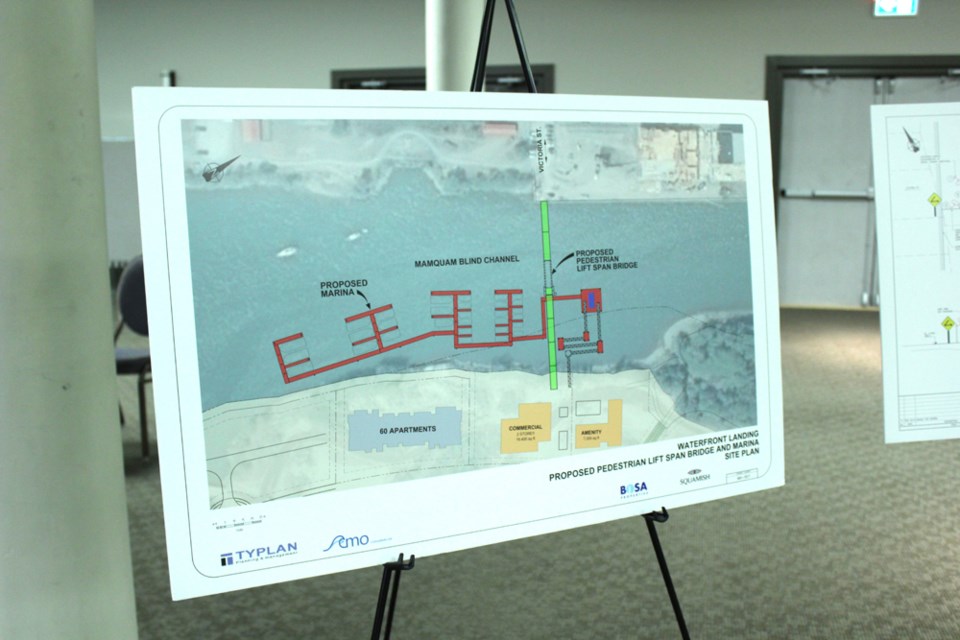A proposed bridge that could transform how people access Squamish's downtown and waterways was the subject of many questions at a public meeting on April 17.
Dave Marrow, the director of major projects with the District of Squamish, said the Waterfront Landing site — where the bridge will cross from — is a key location between the Valleycliffe area and downtown.
The pedestrian bridge will be built by the Waterfront Landing developer, Bosa Properties, as a community amenity contribution, but owned and operated by the District.
Around 20 people attended the public meeting held at the Sea to Sky Hotel to hear about the bridge.
Most of the comments the project received before the meeting, consultant Russ Tyson said, were about the operating seasons and response times.
"This was the key area of issue with most of the mariners. They wanted the times reduced. We are recommending reducing those times, but it is solely dependent on the engineering and structural information we get when we move from conceptual design to detailed design and functional design," Tyson said.
He said they will potentially increase the summer season of operations by 10 weeks, after upstream mariners said the season was too short.
The current operational times, Tyson said, "are not final. We can change them at any time, provided the statistical and factual evidence is there for that to happen."
One of the people who spoke at the meeting said he is the owner of a marine eco-tour business. The man said he has concerns about the summertime hours, when he operates cruises that would need to pass through the bridge after the designated 10 p.m. operating time. He also said the fall winds on the channel can be 40 knots, and mariners often use the area north of the proposed bridge as an abatement zone to regain control of their vessels.
"If the bridge was closed, there would be nothing that we could do to not crash into it," he said. "It's not just an issue of vessels that are moored to the north of the bridge, it's also a safety issue for any vessel entering the Blind Channel."
Elizabeth Harries, a Navigable Waters Protection Officer for Transport Canada, asked if mariners would be able to call in advance to schedule the bridge to lift.
"From the District's perspective who's going to be operating the bridge, that makes our life easier," Marrow responded, adding that the bridge can't impede boat traffic.
"If it has to remain open for a half an hour — 45 minutes — to let these boats through, that would be the priority for safety," Marrow said. "We're not going to be rushing to get the bridge closed because people are queuing with their bikes."
One woman asked about how noise, vibration, and light from the bridge would impact the float homes proposed on the channel near the bridge. Tyson said the vibration and noise would be addressed in the operation parameters as the bridge is designed.
Another man in the audience asked why the bridge lift was by demand instead of on a schedule. Harries said it is the law that people have the right to navigate. Others asked about the price of the bridge and if other methods of transportation such as tunnels or shuttle boats had been considered. The price, Tyson said, can't be given until a final design is made. A tunnel, because of the soil, would not be economical.
Currently, proponents are working on the conceptual design, then the bridge will move to a functional design where engineers will decide between a lift span, roller system or swing span type lift bridge. Then the detailed design will be developed.
"What we really need is everyone's concerns now as opposed to after it's built," Jeff Levine, a Bosa Properties consultant, said.
The survey will be available until April 26.



